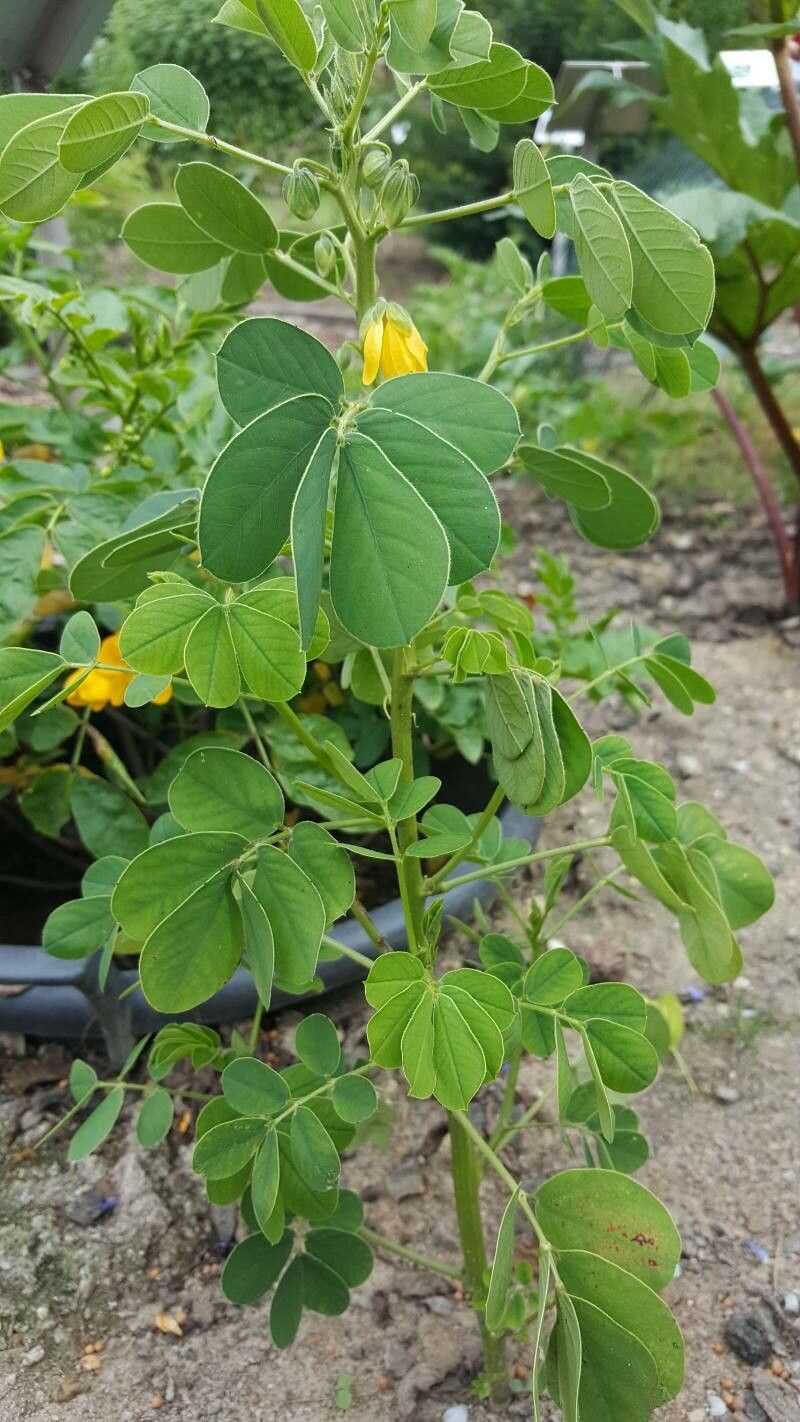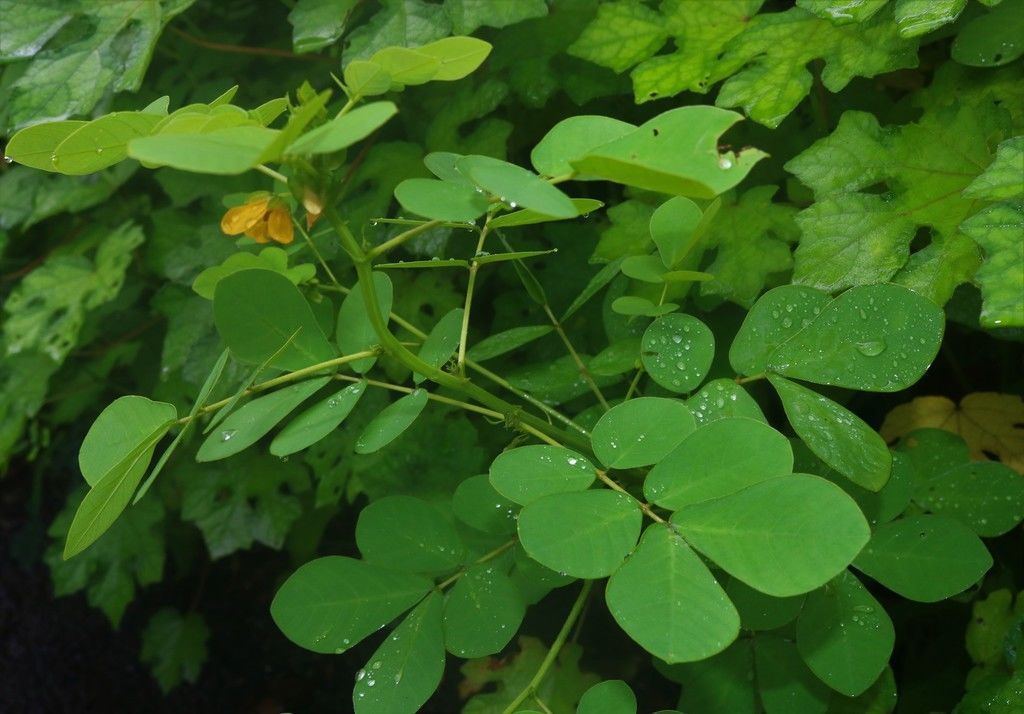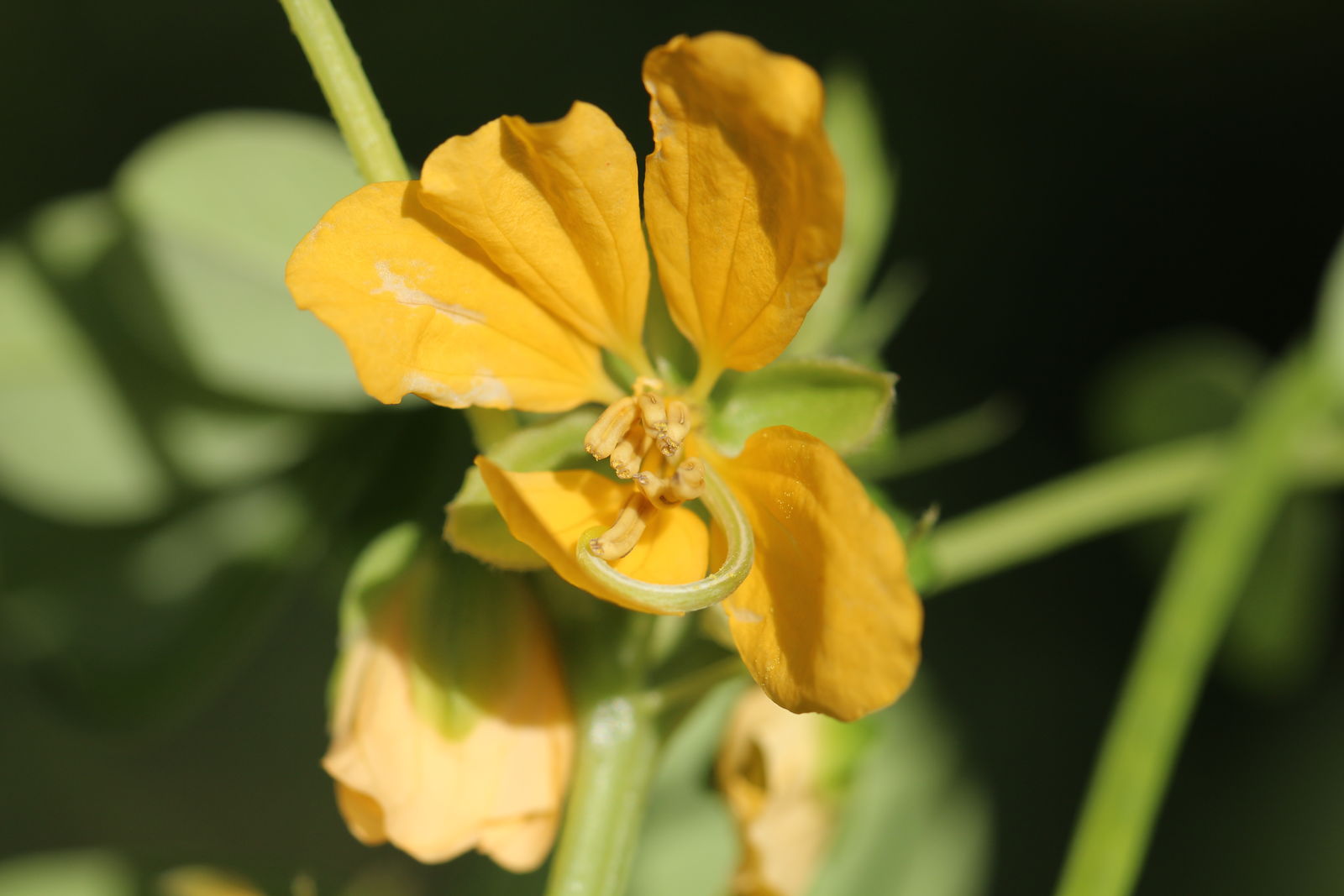Rattlebox, Jumbie bean, Coffeeweed
senna tora
Also known as: ["Rattlebox","Jumbie bean","Coffeeweed","Sicklepod"]
Overview
A leguminous plant with pinnate leaves and yellow flowers, often found in tropical and subtropical regions.
Benefits & Perks
["drought tolerant","wildlife attractant (bees, butterflies, birds)"]
Botanical Classification
| Phylum: | Magnoliophyta |
| Class: | Magnoliopsida |
| Order: | Fabales |
| Family: | Fabaceae |
| Genus: | Senna |
| Botanical Name: | Senna tora |
Plant Characteristics
Basic Information
- Category: Herbs & Weeds
- Suitable Location: outdoor garden bed in temperate to tropical regions
- Suitable For:
- Is Weed: No
- Allergenicity: low
Environmental Needs
- Climate: {"temperatureRange":"10–35°C"}
- Hardiness: {"zones":"9–11"}
- Misting: rarely required, only if ambient humidity is very low
- Drainage: Fast-draining to prevent root rot.
- Soil Type: Well-draining, loamy soil with organic matter.
Maintenance Level
- Maintenance Level: low
- Toughness Level: high
- Pruning Frequency: Annually or as needed to maintain shape.
- Pruning Intensity: Moderate; remove up to one-third of growth if overgrown.
Care Details
Ideal Sunlight Coverage:
Full sun (6–8 hours/day); tolerates partial shade but may flower less.
Sunlight Tolerance Tips:
Acclimate gradually if moving from shade to sun; protect from intense midday sun in hot climates; ensure good air circulation to prevent fungal issues.
Care Requirements
Care Difficulty
easymoderate
Sunlight
full sun to partial shade
Rotate plant for even growth; use sheer curtains in extreme heat; avoid direct sun on leaves during peak hours.
Watering
every 7–10 days during active growth, reduce in winter
Water thoroughly but allow soil to dry between waterings; avoid overwatering, especially in winter.
Soil
well-draining, loamy soil with moderate organic content
pH: Slightly acidic to neutral (6.0–7.0).
Use a mix of potting soil and perlite; avoid heavy clay soils; ensure pots have drainage holes.
Temperature
Warm conditions (65–85°F/18–29°C); sensitive to frost; prefers stable temperatures.
Avoid sudden temperature changes; protect from drafts; maintain consistent warmth.
Fertilizing
every 4–6 weeks during growing season with balanced liquid fertilizer
Apply fertilizer after watering to prevent root burn; flush soil occasionally to prevent salt buildup; adjust frequency based on growth rate.
Propagation
Methods
Stem cuttings or seeds.
Step-by-Step Propagation Guide
- Take a 4–6 inch cutting.
- Remove lower leaves.
- Dip in hormone.
- Plant in medium.
- Keep moist and warm.
Best Time: Spring or early summer when growth is active.
Environment
Warm (70–75°F/21–24°C), high humidity (70–80%), indirect light.
Medium
Well-draining mix like perlite and peat moss or cactus soil.
Hormone
Optional but recommended for faster rooting.
Timeline
Roots in 2–4 weeks; establish in 2–3 months.
Tools Needed
Pruners, rooting hormone, small pots, misting spray bottle.
Quick Tips
Use healthy, non-flowering stems; maintain consistent moisture; provide bottom heat if possible.
Pruning & Repotting
Pruning Guide
Method
Selective cutting of stems; pinch back tips for bushier growth.
Pruning Plan
Shape plant, remove dead/diseased growth, encourage bushier form; best done in spring before active growth.
Tools
Pruning shears, sterilizing solution, gloves.
Checklist
Sterilize tools; prune in early morning; remove dead/diseased parts; shape evenly.
Repotting Guide
Best Season
Spring, before new growth begins.
Pot Size
One size larger pot (e.g., +2 inches in diameter).
Method
Remove plant gently; trim roots if needed; place in new pot with fresh soil; water lightly.
Suggestions
Repot every 2–3 years or when roots fill the pot; beneficial for growth and health.
Checklist
Check root bound status; prepare new pot; use fresh soil; water after repotting.
Advanced Care Tips
Watering Mastery
Watering Checklist
Check soil moisture; water deeply; ensure drainage; adjust for season.
How to Apply Water Properly
Water at the base of the plant, ensuring moisture reaches the root zone; allow excess water to drain away; water in the morning to reduce evaporation and fungal risk.
Watering Schedule Tips
Water deeply once the top inch of soil feels dry; reduce frequency in winter to prevent root rot.
Soil Improvement
Add perlite or sand for drainage; incorporate compost for fertility; ensure good aeration.
Temperature Stress Management
Signs of Temperature Issues
Wilting, yellowing leaves, stunted growth, or bud drop in extreme conditions.
Cold Stress
Growth slows or halts; leaves may turn yellow or brown; risk of frost damage.
Solution: Move to a warmer location; provide frost protection; reduce watering in cold periods.
Hot Stress
Leaf scorch, wilting, or leaf drop; reduced flowering.
Solution: Provide shade during peak heat; increase humidity; water more frequently but avoid waterlogging.
Fertilizing Guide
Fertilizing Checklist
Check season; dilute fertilizer; apply to moist soil; avoid foliage contact.
Fertilizing Method
Use balanced liquid fertilizer diluted to half strength every 4–6 weeks during growing season (spring/summer); avoid fertilizing in winter.
Common Problems & Solutions
Toxicity Warning
Cats
Slightly ToxicCats are sensitive to anthraquinone glycosides found in Senna tora seeds. Ingestion can result in mild to moderate gastrointestinal irritation, potentially leading to discomfort and dehydration.
⚠️ Symptoms:
🌿 Toxic Parts:
⚡ Toxic If:
if eaten
Dogs
Slightly ToxicIn dogs, ingestion of Senna tora seeds can cause mild to moderate gastrointestinal upset due to the presence of anthraquinone glycosides. These compounds stimulate bowel movements, which can lead to dehydration if excessive.
⚠️ Symptoms:
🌿 Toxic Parts:
⚡ Toxic If:
if eaten
Humans
Slightly ToxicSenna tora seeds contain anthraquinone glycosides, which can act as laxatives in humans. Overconsumption may lead to gastrointestinal distress and electrolyte imbalances. The physiological impact is primarily localized to the digestive system.
⚠️ Symptoms:
🌿 Toxic Parts:
⚡ Toxic If:
if eaten
Frequently Asked Questions
Q: Is Senna tora toxic to humans?
A: Yes, it is mildly toxic if ingested.
Q: Does Senna tora attract wildlife?
A: Yes, it attracts bees, butterflies, and birds.
Q: Is Senna tora difficult to care for?
A: No, it is easy to care for and requires low maintenance.
Quick Reference
| Family: | Fabaceae |
| Care: | easy |
| Light: | full sun to partial shade |
| Water: | every 7–10 days during activ |
Get Expert Care Tips
Download the Plantious app for personalized care reminders and plant identification!
Google Play App Store








